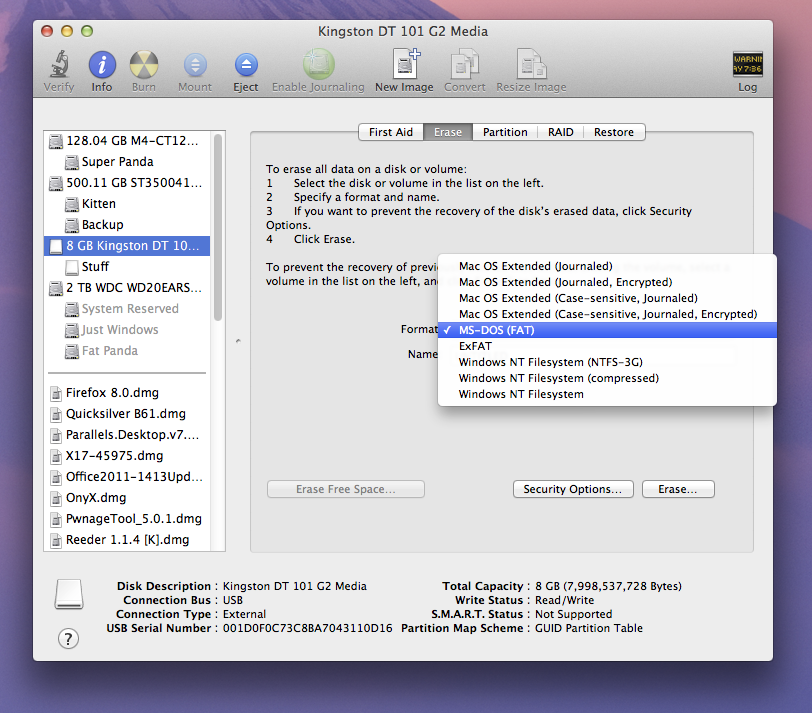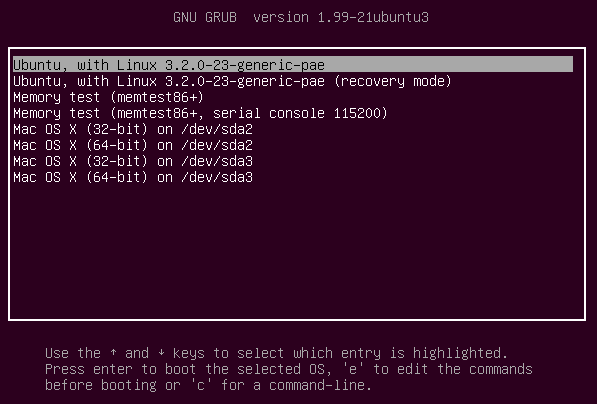- Mac OS is one of the well-known operating systems that most of the Mac user use this OS. If you want to know which things are new on this operating system, visit Apple's website. OS X El Capitan (version 10.11) is the twelfth major release of OS X, Apple Inc.'s desktop and server operating system for Macintosh computers.
- Press C During Startup: Booting from a CD? You can hold down the C key on your keyboard to.
When starting to install or configure a Hackintosh, you must begin with Bios configuration, without proper Bios configuration system may reboot, kernel panic or cause some other issues, this guide shows how to configure bios for a Hackintosh
When thinking about configuring BIOS, the configuration depends on the bootloader that is being used, two known boot-loader for Hackintosh are Chameleon and Clover, Chameleon is a BIOS type boot-loader, Clover can be installed as UEFI boot-loader as well as BIOS type boot-loader.
Learn more about UEFI & BIOS boot process in Hackintosh
Without correct Bios configuration system will not boot but boot issues are not only caused by Bios so read the guide Debugging your Hackintosh to know more about Hackintosh boot problems

When thinking about configuring BIOS, the configuration depends on the bootloader that is being used, two known boot-loader for Hackintosh are Chameleon and Clover, Chameleon is a BIOS type boot-loader, Clover can be installed as UEFI boot-loader as well as BIOS type boot-loader. Download OS X Mountain Lion Leave A Reply.

Setting up Legacy BIOS Boot (Chameleon or Clover)
1 HPET Setting Hackintosh
The setting name or menu of settings will not be same as the pictures below, You have to find the settings yourself in your BIOS
HPET Must be set to ON or Enabled in BIOS
HPET Mode must be 64-Bit
In case of kernel panic related to HPET use kernel flag ForceHPET=Yes
2 SATA Settings
SATA must be changed as AHCI most latest Chipsets supports SATA mode which is very fast and doesn't need additional kexts in most cases.
3 Executive Disable Bit Setting Hackintosh
You must change Execute Disable Bit (also known as XD Function to Enabled this is very important if it is disabled system will reboot immediately after loading kernel cache or kexts
set Max CPUID Value Limit as Disabled Audio music editor for mac.
4 USB Setting Related to Hackintosh
Bios For Mac Os X 10.13
without proper USB configurations USB Bootable Volumes, Keyboard mouse, and other USB peripherals may not work.
make your Bios reflect the same configuration listed in above image
- BIOS EHCI Handoff should be Enabled
- Set Legacy USB Support as Enabled
in case of USB device detection failure, your Hackintosh installation flash drive will not work and you'll be left with a continuous message of Still waiting for root device, USBBusFix=Yes may fix it in chameleon.
Bios For Mac Os X 10.8
To use any of these key combinations, press and hold the keys immediately after pressing the power button to turn on your Mac, or after your Mac begins to restart. Keep holding until the described behavior occurs.
- Command (⌘)-R: Start up from the built-in macOS Recovery system. Or use Option-Command-R or Shift-Option-Command-R to start up from macOS Recovery over the Internet. macOS Recovery installs different versions of macOS, depending on the key combination you use while starting up. If your Mac is using a firmware password, you're prompted to enter the password.
- Option (⌥) or Alt: Start up to Startup Manager, which allows you to choose other available startup disks or volumes. If your Mac is using a firmware password, you're prompted to enter the password.
- Option-Command-P-R:Reset NVRAM or PRAM. If your Mac is using a firmware password, it ignores this key combination or starts up from macOS Recovery.
- Shift (⇧): Start up in safe mode. Disabled when using a firmware password.
- D: Start up to the Apple Diagnostics utility. Or use Option-Dto start up to this utility over the Internet. Disabled when using a firmware password.
- N: Start up from a NetBoot server, if your Mac supports network startup volumes. To use the default boot image on the server, hold down Option-N instead. Disabled when using a firmware password.
- Command-S: Start up in single-user mode. Disabled in macOS Mojave or later, or when using a firmware password.
- T: Start up in target disk mode. Disabled when using a firmware password.
- Command-V: Start up in verbose mode. Disabled when using a firmware password.
- Eject (⏏) or F12 or mouse button or trackpad button: Eject removable media, such as an optical disc. Disabled when using a firmware password.
If a key combination doesn't work
If a key combination doesn't work at startup, one of these these solutions might help:
- Be sure to press and hold all keys in the combination together, not one at a time.
- Shut down your Mac. Then press the power button to turn on your Mac. Then press and hold the keys as your Mac starts up.
- Wait a few seconds before pressing the keys, to give your Mac more time to recognize the keyboard as it starts up. Some keyboards have a light that flashes briefly at startup, indicating that the keyboard is recognized and ready for use.
- If you're using a wireless keyboard, plug it into your Mac, if possible. Or use your built-in keyboard or a wired keyboard. If you're using a keyboard made for a PC, such as a keyboard with a Windows logo, try a keyboard made for Mac.
- If you're using Boot Camp to start up from Microsoft Windows, set Startup Disk preferences to start up from macOS instead. Then shut down or restart and try again.
Remember that some key combinations are disabled when your Mac is using a firmware password.
Learn more

When thinking about configuring BIOS, the configuration depends on the bootloader that is being used, two known boot-loader for Hackintosh are Chameleon and Clover, Chameleon is a BIOS type boot-loader, Clover can be installed as UEFI boot-loader as well as BIOS type boot-loader. Download OS X Mountain Lion Leave A Reply.
Setting up Legacy BIOS Boot (Chameleon or Clover)
1 HPET Setting Hackintosh
The setting name or menu of settings will not be same as the pictures below, You have to find the settings yourself in your BIOS
HPET Must be set to ON or Enabled in BIOS
HPET Mode must be 64-Bit
In case of kernel panic related to HPET use kernel flag ForceHPET=Yes
2 SATA Settings
SATA must be changed as AHCI most latest Chipsets supports SATA mode which is very fast and doesn't need additional kexts in most cases.
3 Executive Disable Bit Setting Hackintosh
You must change Execute Disable Bit (also known as XD Function to Enabled this is very important if it is disabled system will reboot immediately after loading kernel cache or kexts
set Max CPUID Value Limit as Disabled Audio music editor for mac.
4 USB Setting Related to Hackintosh
Bios For Mac Os X 10.13
without proper USB configurations USB Bootable Volumes, Keyboard mouse, and other USB peripherals may not work.
make your Bios reflect the same configuration listed in above image
- BIOS EHCI Handoff should be Enabled
- Set Legacy USB Support as Enabled
in case of USB device detection failure, your Hackintosh installation flash drive will not work and you'll be left with a continuous message of Still waiting for root device, USBBusFix=Yes may fix it in chameleon.
Bios For Mac Os X 10.8
To use any of these key combinations, press and hold the keys immediately after pressing the power button to turn on your Mac, or after your Mac begins to restart. Keep holding until the described behavior occurs.
- Command (⌘)-R: Start up from the built-in macOS Recovery system. Or use Option-Command-R or Shift-Option-Command-R to start up from macOS Recovery over the Internet. macOS Recovery installs different versions of macOS, depending on the key combination you use while starting up. If your Mac is using a firmware password, you're prompted to enter the password.
- Option (⌥) or Alt: Start up to Startup Manager, which allows you to choose other available startup disks or volumes. If your Mac is using a firmware password, you're prompted to enter the password.
- Option-Command-P-R:Reset NVRAM or PRAM. If your Mac is using a firmware password, it ignores this key combination or starts up from macOS Recovery.
- Shift (⇧): Start up in safe mode. Disabled when using a firmware password.
- D: Start up to the Apple Diagnostics utility. Or use Option-Dto start up to this utility over the Internet. Disabled when using a firmware password.
- N: Start up from a NetBoot server, if your Mac supports network startup volumes. To use the default boot image on the server, hold down Option-N instead. Disabled when using a firmware password.
- Command-S: Start up in single-user mode. Disabled in macOS Mojave or later, or when using a firmware password.
- T: Start up in target disk mode. Disabled when using a firmware password.
- Command-V: Start up in verbose mode. Disabled when using a firmware password.
- Eject (⏏) or F12 or mouse button or trackpad button: Eject removable media, such as an optical disc. Disabled when using a firmware password.
If a key combination doesn't work
If a key combination doesn't work at startup, one of these these solutions might help:
- Be sure to press and hold all keys in the combination together, not one at a time.
- Shut down your Mac. Then press the power button to turn on your Mac. Then press and hold the keys as your Mac starts up.
- Wait a few seconds before pressing the keys, to give your Mac more time to recognize the keyboard as it starts up. Some keyboards have a light that flashes briefly at startup, indicating that the keyboard is recognized and ready for use.
- If you're using a wireless keyboard, plug it into your Mac, if possible. Or use your built-in keyboard or a wired keyboard. If you're using a keyboard made for a PC, such as a keyboard with a Windows logo, try a keyboard made for Mac.
- If you're using Boot Camp to start up from Microsoft Windows, set Startup Disk preferences to start up from macOS instead. Then shut down or restart and try again.
Remember that some key combinations are disabled when your Mac is using a firmware password.
Learn more
Uefi Bios Mac Os X
- Learn what to do if your Mac doesn't turn on.
- Learn about Mac keyboard shortcuts that you can use after your Mac has started up.
